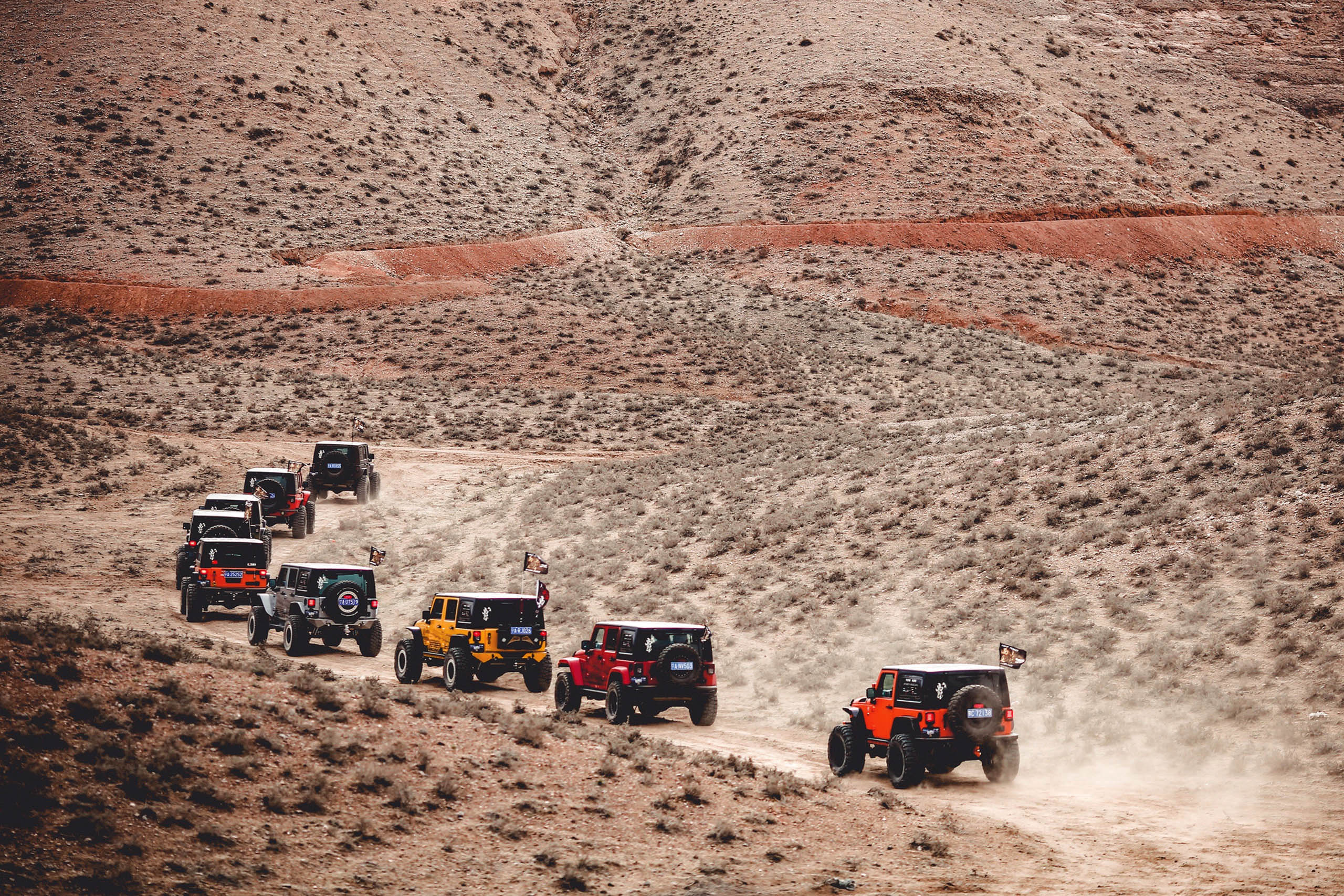Truck and Off-Road Market Trends

Consumer Demand Continues for Pickups and Crossovers; Overlanding Remains a Growth Sector; Electrification Continues Apace.
More than half of all vehicles on the road in the United States are either pickups, SUVs or CUVs. According to the most recent issue of “SEMA Future Trends,” the light-truck segment (which includes pickups, vans, SUVs and CUVs) is forecast to account for close to 80% of all new-vehicle sales by 2027, with pickups alone making up nearly 50% of all new vehicles sold.
New-vehicle sales in 2021 remained relatively flat compared to 2020, with an estimated 14.9 million units sold—a 2.5% increase over the previous year, according to Cox Automotive. Shortages of semiconductors kept inventories low for most of the period, and the year ended with roughly 1 million units on dealer lots, down from 3.5 million in pre-pandemic 2019.
More promisingly for the truck and off-road segment, pickups, SUVs and crossovers represented more than 80% of all new-vehicle sales in the month of December, according to J.D. Power & Associates. For the year, the top three best-selling vehicles in the United States were ½-ton pickups from Ford, Ram and Chevrolet, and seven of the top 10 U.S. best sellers in 2021 were either trucks, SUVs or
crossovers.
For this article, we consulted a number of industry leaders for their perspectives on the overall state of the marketplace. What follows is a summation of their views.
The State of The Industry: Pent-Up Demand, Record Growth
“The industry is still very healthy,” said Ted Wentz, CEO of Quadratec (booth #58085). “The entire industry experienced massive growth during the pandemic. We undertook years of growth in a period of around nine months.”
“There aren’t a lot of new cars entering the market anymore,” said Jenna Jefferies, national account manager for Pertronix Performance Brands (booth #23135). “We’re backordered for months on end—and growing, growing, growing.”
On a related note, PSC Motorsports COO Randall Speir noted the many new truck and SUV models, such as Chevrolet’s Colorado Trail Boss and Ford’s Ranger Raptor, that are more off-road-friendly in design than their predecessors.
“We have new entrants in the market, with Ford coming in and Chevrolet with some new things, and now Rivian,” he said. “We’ve got lots of new off-road-focused vehicles coming into the market, and that’s great, because they give us platforms we can use to make cool products for them.”
All of our experts similarly agreed that the combination of pandemic lockdowns, corporate work-from-home directives and government stimulus checks contributed to the growth of the sector.
“People wanted to get outside, and they had time on their hands to go outside with their vehicles and have fun with their families, so that played a big part in it,” Speir said.
“At the beginning of the pandemic, there was a bit of a growth in replacement parts as people were just trying to keep their vehicles running and didn’t necessarily feel comfortable going to shops,” Wentz said. “Now we’re seeing growth in categories that support an outdoor lifestyle.”
From a business perspective, the pandemic also gave many companies a chance to reevaluate and reassess their existing sales and marketing models and to make adaptations to changes in the marketplace.
“With the pandemic, everybody had an opportunity to sit down at their desks, take a breather, think about what they could do differently, and now they’re bringing great things to market,” said Charlene Bower, owner of Bower Motorsports Media. “As business owners, we’ve all had a chance to review what we’ve been doing and see what we need to continue and what we need to redevelop—from services to products to everything in between.”
Digital Resources: The New Media Landscape
Bower also heads Bower Academy, an educational program that provides hands-on instruction for women in subjects ranging from off-road driving and vehicle maintenance and repair to principles of Tread Lightly! and other topics. When the pandemic hit and indoor hands-on learning wasn’t feasible, “I took a nap for two weeks to think about what I could do differently with my business,” she said.
“I rotated all my educational programs online as opposed to being in-person. We have online classes now through Bower Academy, which includes how-to classes, and I was able to turn my backyard into an area where girls can learn and train.”
Along with providing online content for customers, many companies learned to leverage the power of social media to maximize consumer outreach.
“While face-to-face and meeting at events are the best ways to interact with customers, social media is an extension of word-of-mouth with photos,” Speir said. “People want to be a part of something, so it’s great that we have a social network and that we have Facebook Groups and things that are around our industry. It’s becoming a big part of promoting our brand.”
Social media is huge, Wentz agreed. “It’s another touchpoint to communicate with your customers and to create a community,” he said. “As the younger generations move up in the workforce, they’re generating capital, and they’re ready to go have some fun with their vehicles. If you want to communicate with those folks, you need to find a way to do so in the channels they’re comfortable with.”
While acknowledging social media’s brand-building potential, Wentz also offered a word of caution when dealing with a form of media that’s still rapidly evolving.
“TikTok is big right now, and for now, that’s the big growth channel,” he said. “What we tend to see with these new social-media outlets is that sometimes they go up in popularity really quickly, and sometimes they stay popular and sometimes they don’t. You have to be cautious about how you invest in these things and make sure you don’t overcommit to something that isn’t going to be around tomorrow.”
Outdoor Lifestyles: Opportunities for Growth
All of our sources also agreed that the steady popularity of overlanding remains a bright spot in the market. First popularized in Australia, the hobby caught on quickly in South America and Sub-Saharan Africa before catching fire in North America, where it has grown exponentially over the past decade and a half.
“It’s not just overlanding,” Wentz said. “It’s whatever you can use on your vehicle to enjoy being outside. Overlanding’s a part of that, sure, but anything to do with biking or hiking or fishing [is becoming popular]—any of those things you can do outside and that allow you to accessorize your vehicle to help achieve that.”
“We’re also seeing some movement in the crossover segment—Subarus for one—and that is bringing new customers to our industry.” Speir said.
That said, overlanding is still a huge deal, Jefferies said, noting that the Jeep market is still going, and the Bronco market is taking off.
“Work-from-home options during the pandemic gave people the opportunity to go adventure while still being successful at their businesses, and I see that trend continuing going forward,” Bower added.
Future Challenges and Opportunities
Nearly all of our experts said that staffing issues pose the greatest potential obstacle to growth in the short term.
“Right now, the labor shortage is a real problem,” Wentz said. “I’ve never seen anything like it.”
Speir agreed. “We’re not finding enough people who want to work,” he said. “The pandemic may have changed the way some people feel about life and changed their priorities, and that may have had an effect on the job market. Hopefully, we’ll see some additional influx into technical schools where kids are actually working on vehicles and falling in love with working on them, and that will refresh out talent pool. Getting involved in educating the future of our industry is a tremendous opportunity.”
Jefferies concurred, adding that it’s crucial to get the youth involved in the market.
Supply-chain issues also pose an ongoing challenge, although Wentz sees signs of improvement in the not-too-distant future.
“I’m seeing some signs that there could be some normalization coming at some point in 2022, but I think we’re going to have to ride this supply-chain issue for a while,” he said. “It’s definitely a challenge.”
A further potential problem facing the off-road side of the market is maintaining access to public lands.
“That’s one of our biggest issues at the Truck & Off-Road Alliance,” Speir said. “We must make sure that people take care of the land and that we don’t lose our access.”
Jefferies also noted the rapid growth of electrification in the truck sector and the need to keep up with the latest OE technologies.
“I think EVs are a huge thing that we’ll need to get adjusted to, and that will require adaptation by our industry,”
she said.
More than 1.2 million HEVs or EVs were sold in the United States in 2021, a 75% increase over 2020 and a combined 8% of all new-vehicle sales.
Still, our panel believes that the foreseeable future is still relatively bright for the industry. Wentz offered this advice for businesses looking to increase their market presence in the coming year:
“From an opportunity perspective, the industry has acquired more customers over an 18-month period than it has ever had before. What are we going to do with those customers? What are we going to innovate for them? What are we going to do to keep them interested in our brands? Those are the kinds of questions we need to be asking ourselves if we want to take advantage of this growth opportunity that’s right in front of us.”


